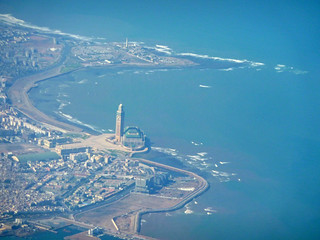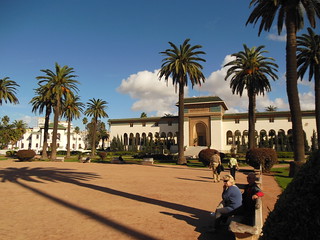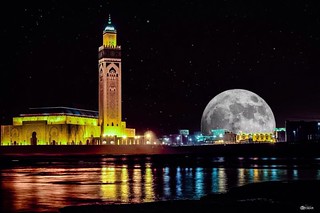The history of ‘Dar El Beida’ (‘Casablanca’ in Spanish) is very special because it goes back to the pre-historic times when it was known as ‘Anfa’. In 2004, Chavagnac stated that “Because of their history, their prestige and architectural grandeur, there are cities that are destined to be part of our world heritage. There are others that were less-well-born; cities with a less glorious past whose name is rarely mentioned in classical texts. ‘Casablanca’ is one of these cities”. Today, nothing remains of the old city, except the name which refers to the most prosperous part of Casablanca. One abrupt event in the 15th century caused the sudden end of Anfa’s history. The Portuguese troops wanted to get rid of local pirates, which resided in ‘Anfa’ and caused danger to the Portuguese trading fleet. In 1468 (or 1469), the city was attacked by a Portuguese who totally destroyed the city. After this harsh incident, ‘Anfa’ turned into a ghost town.
It was only after three centuries that the city revived out of its ruins. Somewhere between 1769 and 1775, Sultan ‘Sidi Mohammed Ben Abdallah’ (of the ‘Alaouite’ dynasty) built the old medina (Derb Tazi) and resurrected the walls of the town. The thick, ancient walls are four kilometre long, and covering some 50 hectares. Also around this period (1770), the name of the city ‘Anfa’ was changed into ‘Dar El Beida’ (meaning white houses). Contrary to the imperial towns of Marrakech, Fes, Meknes and Rabat, Anfa stayed until the end of the nineteenth century a minor coastal settlement of no great political, economical or cultural importance. Around 1900, Casablanca counted about 20.000 inhabitants.
Source picture: Omar Mesrar
In 2000, Elmandjra stated that “Casablanca is a city that has very little to conserve, except for the few remainders of the colonial architecture dating from the 1920s and 1930s”. A little mosque in the old medina was the only tangible vestige of the city’s history.
After 1912, the start of the French Protectorate, Casablanca became Morocco’s prime port, and became the centre of international commerce. As been nicely described by Puschmann in 2009, “Casablanca is a demographic miracle on Moroccan soil”. The population of the city impressively grows in one century, from 20.000 inhabitants (47 ha) in 1900 to 4.000.000 in 2000 (98.000 ha).

Picture (with kind permission): Miguel
It can nowadays be considered as the ‘cosmopolitan, industrial, and economic heart’ of the country’. However, the old medina of Casablanca is hardly known by tourists.
Casablanca is part of the tourism region ‘Centre Atlantique‘ of Morocco.



